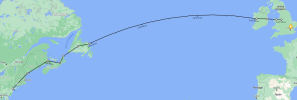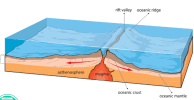Philip
On Moderation
What do you think is the likelihood of an electric railway tunnel being built between England and the USA, under the Atlantic Ocean, within either the next 50 or 100 years?
The 'special relationship' is still there and as international business continues to develop, there will probably be stronger links in the future between England and America. However, air travel could eventually start to reduce until it is no longer seen as a viable transport option, because of concerns about pollution. This is where electric rail links could be a solution, and the only obvious way to link England with America is by a tunnel under the Atlantic, with dual-gauge trains.
Could this be the next major project after HS2? In 2123, could we have a 10:00 London Paddington to Manhatton via Cardiff and Nantucket Island?
What are your thoughts? It might seem crazy now, but then the Channel Tunnel idea would have probably seemed crazy in 1900!
The 'special relationship' is still there and as international business continues to develop, there will probably be stronger links in the future between England and America. However, air travel could eventually start to reduce until it is no longer seen as a viable transport option, because of concerns about pollution. This is where electric rail links could be a solution, and the only obvious way to link England with America is by a tunnel under the Atlantic, with dual-gauge trains.
Could this be the next major project after HS2? In 2123, could we have a 10:00 London Paddington to Manhatton via Cardiff and Nantucket Island?
What are your thoughts? It might seem crazy now, but then the Channel Tunnel idea would have probably seemed crazy in 1900!
Last edited:


